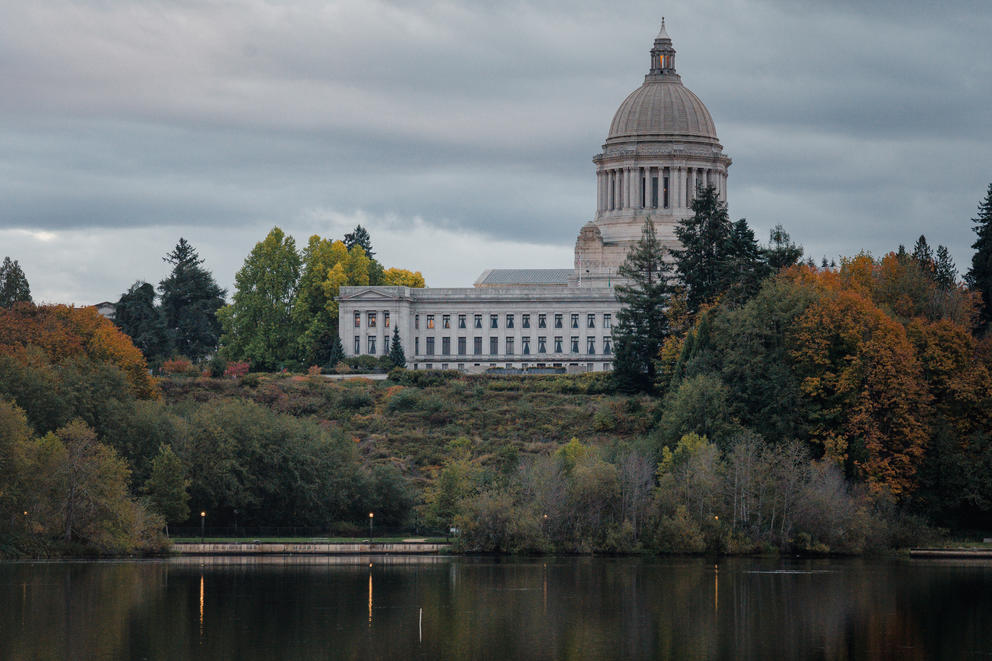In a news conference Wednesday, Inslee laid out his proposal that he'll send to the Legislature, calling it "a substantial and audacious change in our housing efforts."
"Rents have gone up, and people have fallen off the ladder of the ability to pay rent," added the governor. "Our population is still growing, we need to build about 50,000 housing units a year just to keep up. And we're about 5,000 to 7,000 of that short, every single year."
State House and Senate lawmakers would have to pass the proposal before it goes to voters as a referendum, where Inslee predicted it would win approval: "I believe Washingtonians want to see this problem solved."
Those dollars and other efforts in the governor’s proposed state budget for the next two fiscal years would help maintain 2,000 current shelter beds, add roughly 7,500 new affordable housing units and help communities speed the development of more housing for all income levels in the coming years.
Inslee’s announcement came as part of his proposed 2023-25 budget ahead of the Legislature’s return in January. The governor’s proposed $70 billion state operating budget doesn’t propose any new taxes, but would be paid for in part by a tax on capital gains set to begin in January. The capital gains tax is currently facing a legal challenge before the state Supreme Court.
The governor’s spending blueprint – the first step in a long budget process managed mostly by the Legislature over the next four months – also includes the first revenue collected under the state’s new carbon-cap-and-invest law, passed last year.
The two-year state operating budget is the blueprint that directs dollars to Washington’s schools, public lands, parks, prisons, the state’s foster care and mental health systems and economic assistance programs. The budget also pays for Washington state employees, including pay raises.
The proposal comes as the state and nation are being pummeled with economic crosswinds: low unemployment, high inflation and the prospect at some point of a recession as federal interest rates slow the economy.
Washington’s tax collections – which pay for the budget – have so far remained strong. Estimates for tax collections for the current two-year budget cycle are nearly $762 million higher than expected, according to a November budget forecast. Officials also project that the state will bring in about $681 million more than expected for the coming 2023-25 budget cycle, which begins next July. That’s the budget Inslee and lawmakers are cobbling together and will seek to finalize by the end of the 105-day scheduled legislation session.
David Schumacher, director of the state Office of Financial Management, described the budget proposal as a transition after years of the unprecedented COVID-19 pandemic. During that time the state distributed billions in federal government aid packages to pay for the response to the virus, doled out rental and economic assistance and took other emergency measures.
With the pandemic broadly receding and business and social activity largely returning to normal, Schumacher said the new budget focuses on the challenges lawmakers have been trying to tackle for years. Those include two long-grinding crises, homelessness and the mental health system, and the lack of state workers to fill those jobs and others, like in Washington’s ferry system.
“Our problems are staffing and homelessness and behavioral health; these are all things we were wrestling with four or five years ago,” Schumacher said. “They didn't go away.”
The proposed budget also includes about $2 billion in new spending for K-12 education, according to Schumacher, and would pay for salary increases for teachers and other state employees.
The legislative session begins Jan. 9, and House and Senate Democrats – who hold majorities in both chambers – will release their own proposed budgets in the coming months.
In an interview Wednesday morning before the governor’s news conference, Senate Minority Leader John Braun, R-Centralia, said it was time for lawmakers to go deeper into the budget to find savings and cut inefficient spending.
“I think that we've seen tremendous growth in our budget over the last few cycles,” Braun said, adding: “We're well past time we look deeper into the budget.”
The state must also find a way to help middle-class people afford to be able to live in Washington, he added, after years of increases in housing and other costs.



